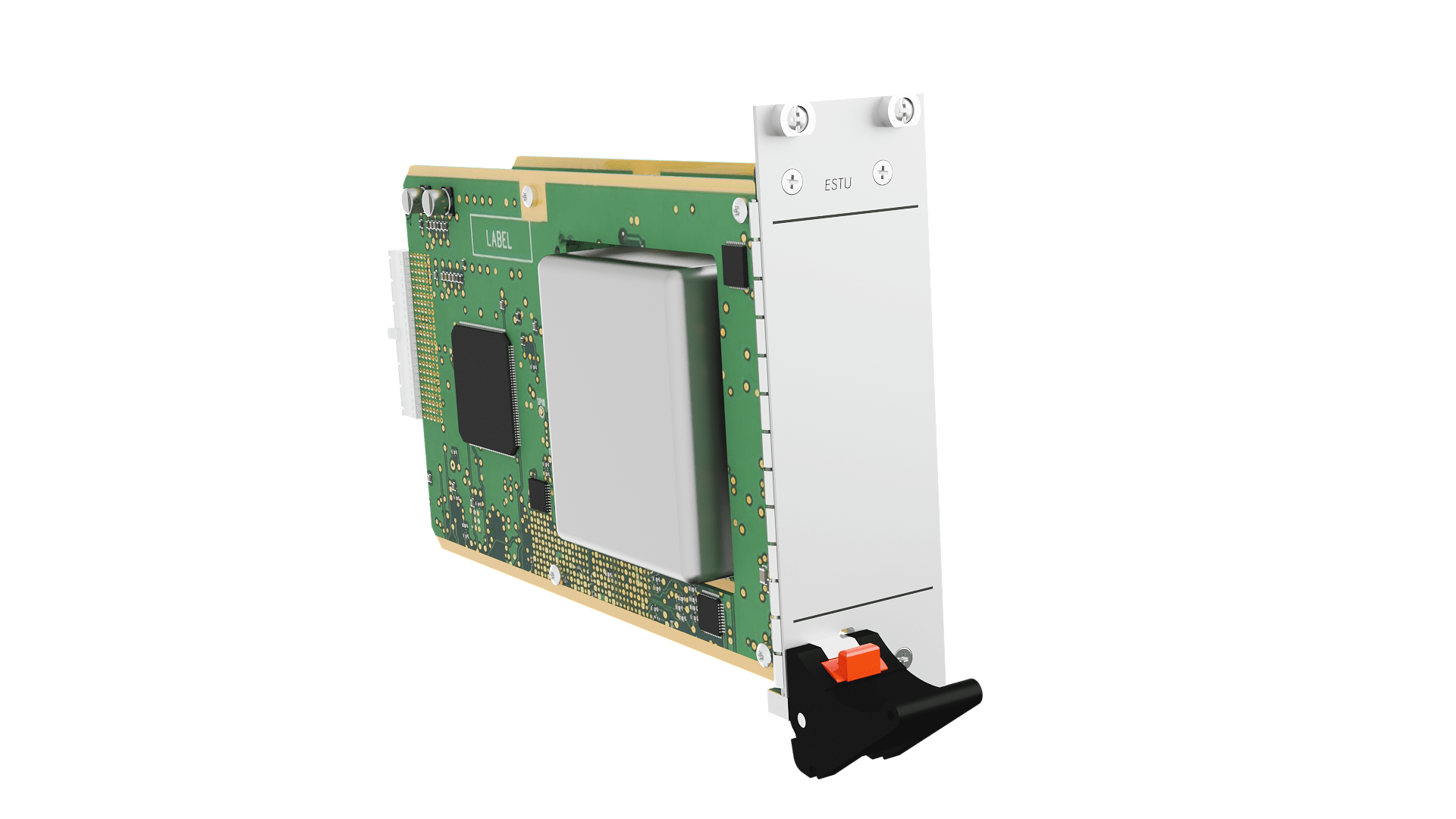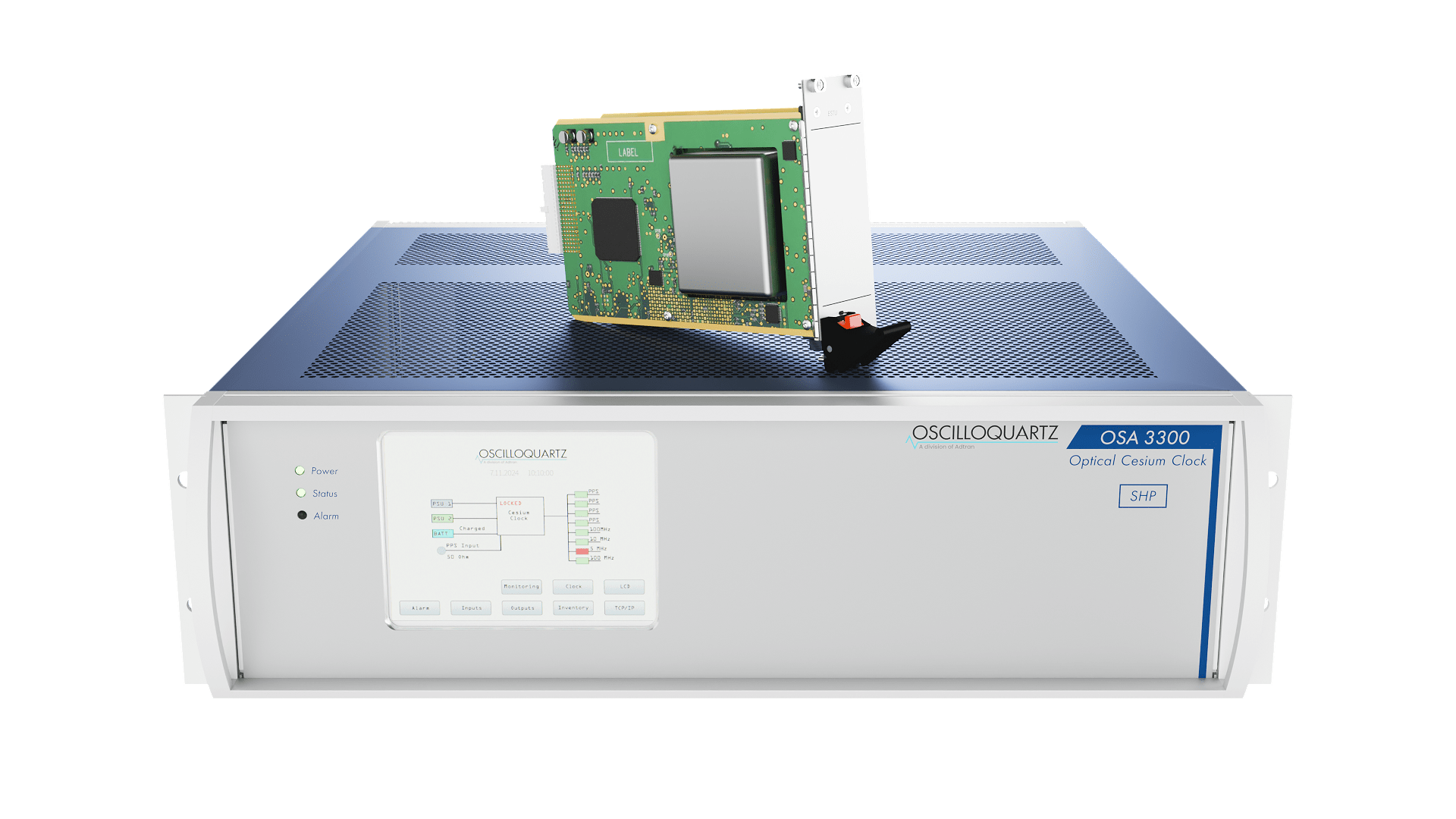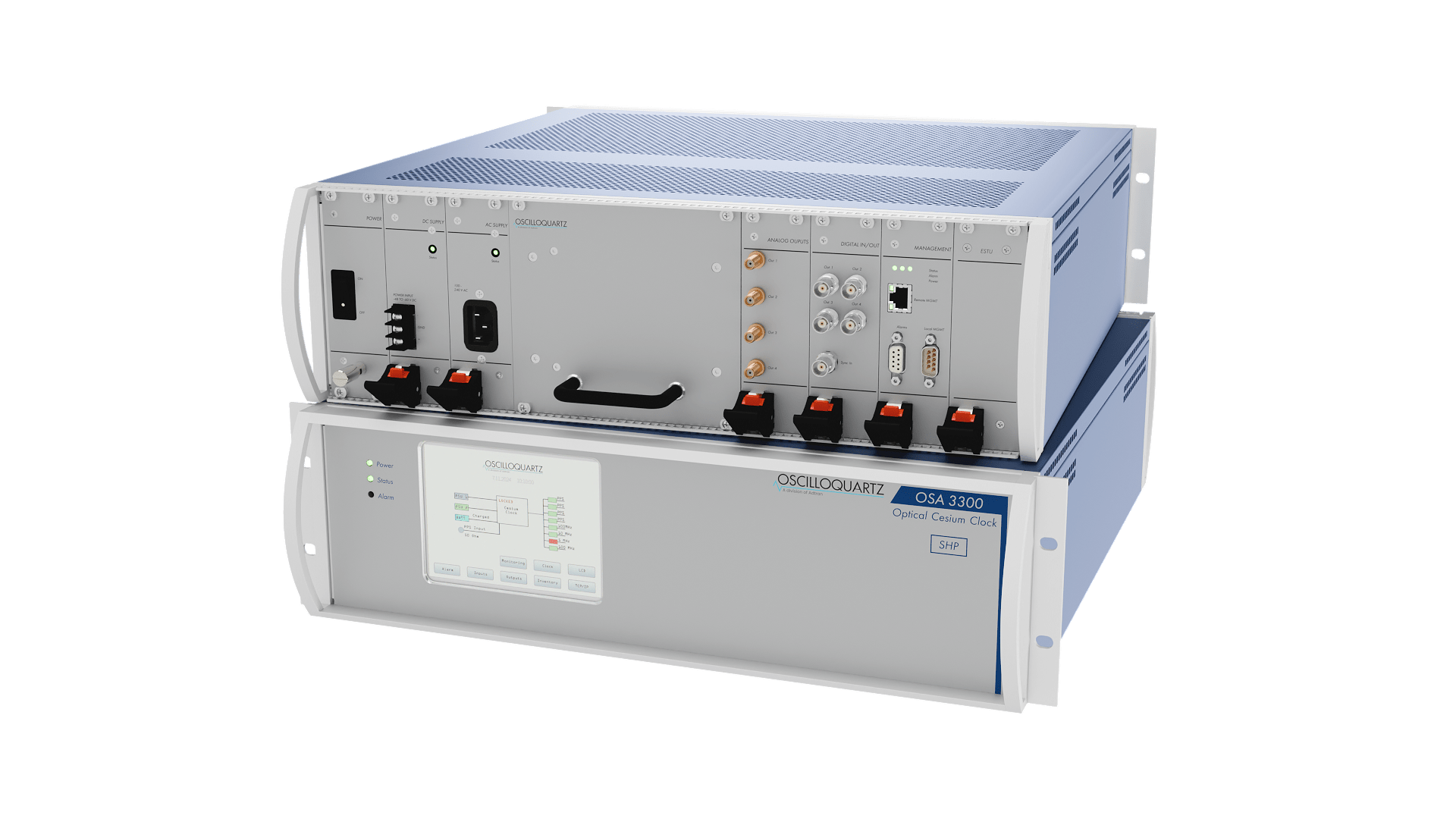What is a hydrogen maser?
Atomic timekeeping
Masers amplify or generate electromagnetic waves – usually in the microwave range – through the stimulated emission of radiation. A hydrogen maser is a type of maser that uses hydrogen atoms to produce an exceptionally stable frequency. It does this by taking advantage of the hyperfine transition in hydrogen, which occurs at a well-defined frequency (around 1.4204GHz). Because their output is so stable, passive hydrogen masers are used in high-precision timekeeping and other applications that demand accurate frequency references and short-term stability.
A widely deployed maser technology
Because of their accuracy and reliability, hydrogen masers are applied in multiple domains, including defense, scientific research and satellite communications.

Our ESTU module sets new benchmarks in Allan Deviation, enabling short-term performance on par with passive hydrogen maser technology.
A cosmic pendulum
Atomic clocks that utilize passive hydrogen masers offer excellent short-term stability, making them useful for applications such as astronomical interferometry and deep space navigation.

Boosting the accuracy of atomic clocks
One of the main applications of hydrogen masers is as a highly stable frequency reference for atomic clocks. Devices prepare a stream of hydrogen atoms to occupy a specific quantum state. Atoms then pass into a resonant cavity designed to support the precise microwave frequency associated with hydrogen’s hyperfine transition. When atoms interact with this microwave field, they amplify it through stimulated emission, producing a pure and stable reference signal for the clock to utilize. This signal is compared to an internal oscillator, which is continuously adjusted to match the maser’s output.
Delivering unparalleled short-term stability
Our Enhanced Short-Term Unit (ESTU) module is a maintenance-free alternative to passive hydrogen masers that enhances our high-performance optical cesium clocks.

Enhancing our optical cesium clocks with ESTU
Passive hydrogen masers were the gold standard for short-term frequency stability for decades. Used in metrology, space exploration, radar, defense and national timekeeping, they provided ultra-low Allan Deviation over short averaging intervals. However, in recent years, the technology has become almost impossible to source in Western markets. Our Oscilloquartz ESTU module provides an alternative. Available as an orderable option for our OSA 3300 high-performance optical cesium clocks, it combines the unmatched long-term frequency accuracy of our optical cesium technology with ultra-stable short-term timing that rivals passive hydrogen masers.
Products

